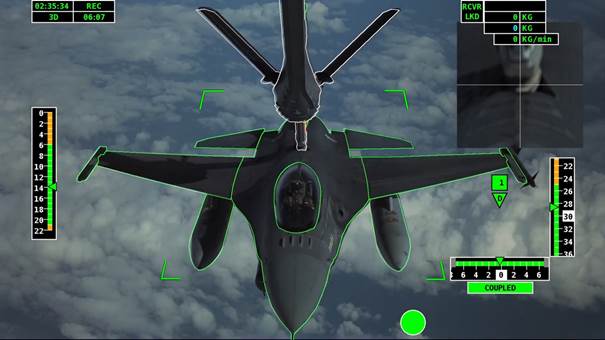Getafe, 17 April 2020 – Airbus has achieved the first ever fully automatic air-to-air refuelling (A3R) operation with a boom system. The flight test campaign, conductedearlier in the year over the Atlantic Ocean, involved an Airbus tanker test aircraftequipped with the Airbus A3R solution, with an F-16 fighter aircraft of the PortugueseAir Force acting as a receiver.
This milestone is part of the industrialisation phase of A3R systems ahead of itsimplementation in the A330 MRTT tanker development.
The campaign achieved a total of 45 flight test hours and 120 dry contacts with theA3R system, covering the whole aerial refuelling envelope, as the F-16 and MRTT consolidate the maturity and capabilities of the development at this stage. Thecertification phase will start in 2021.

Didier Plantecoste, Airbus Head of Tanker and Derivatives Programmes, said: “Theachievement of this key milestone for the A3R programme highlights the A330 MRTT’sexcellent capability roadmap development and once more confirms that our tanker isthe world’s reference for present and future refuelling operations. Our special thanks goto the Portuguese Air Force for their continued support and help on this crucial development”.
The A3R system requires no additional equipment on the receiver aircraft and isintended to reduce air refuelling operator (ARO) workload, improve safety and optimisethe rate of air-to-air refuelling transfer in operational conditions, helping maximise aerialsuperiority. The goal for the A3R system is to develop technologies that will reach fullyautonomous capabilities.
Once the system is activated by the ARO, the A3R flies the boom automatically and keeps the alignment between the boom tip and the receiver receptacle with anaccuracy of a couple of centimeters; the proper alignment and the receiver stability ischecked in real-time to keep a safe distance between the boom and the receiver and also to determine the optimum moment to extend the telescopic beam to achieve theconnection with the receiver. At this point, the fuel transfer is initiated to fill up thereceiver aircraft and once completed and the disconnection is commanded, the boom is cleared away from the receiver by retracting the telescopic beam and flying the boom away to keep a safe separation distance. During this process, the ARO simply monitorsthe operation.


